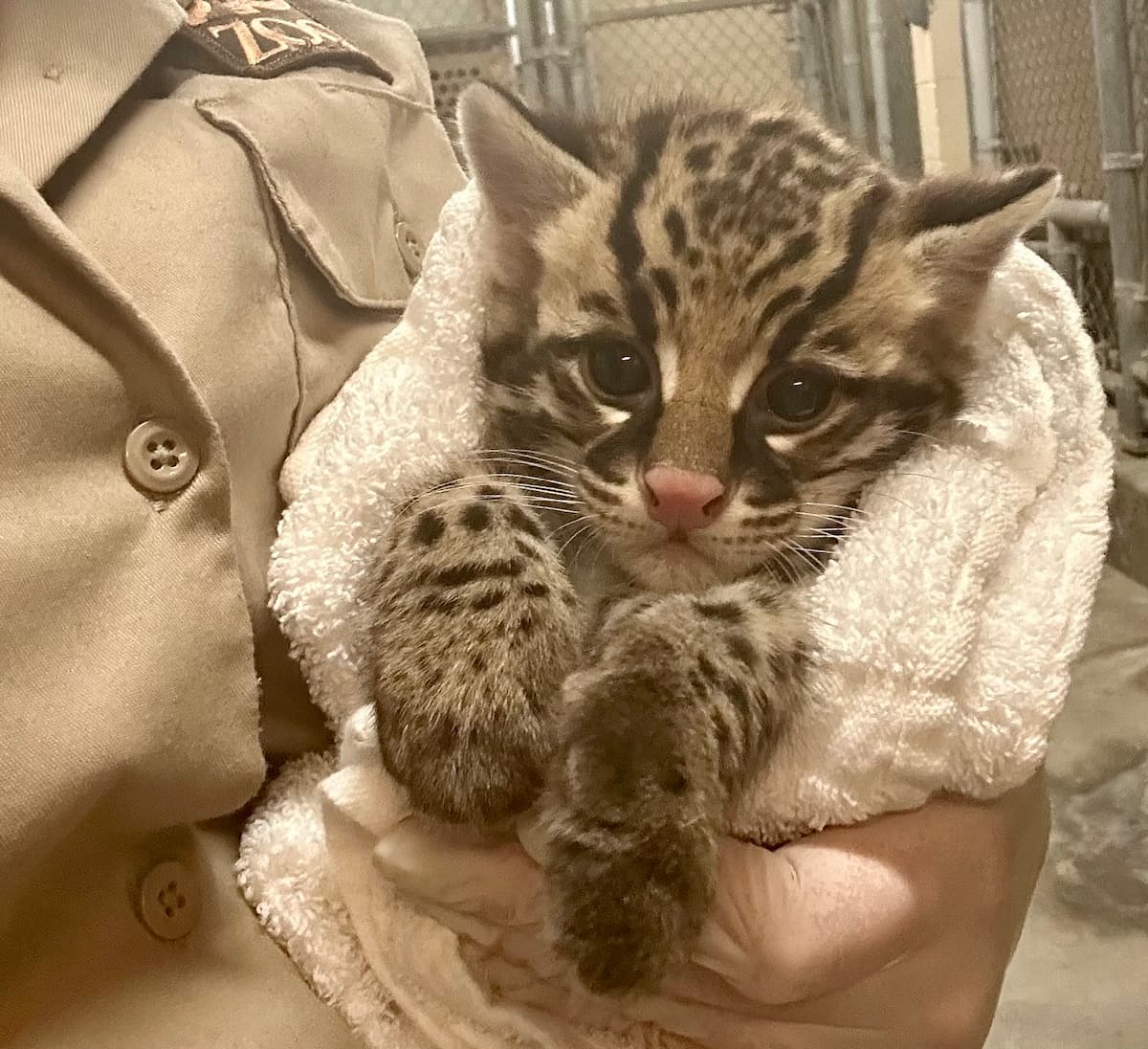
The Los Angeles Zoo has exciting news to share – a male ocelot kitten (Leopardus pardalis) was born Sept. 12.
Weighing just 19 ounces at birth, the male ocelot kitten has been living behind-the-scenes where he will remain until he’s fully vaccinated and animal care staff feel confident he can safely move to his outdoor habitat.
Small wild cats develop quicker than big cats because they are living independently at a much younger age; they are fully independent by two years old. This ocelot kitten is no exception as he now weighs six and a half pounds – around five times his birthweight. Maya, the kitten’s mother, is an experienced nurturing mom which enabled keepers to limit contact, only handling him within the first few weeks to check weight and make sure he was developing normally. Los Angeles Zoo animal keeper Stephanie Zielinski has been closely monitoring the kitten and remarked that he’s already surpassed multiple milestones. Zielinski added, “his eyes opened after nine days and his teeth began to erupt after 20 days. At first he was toddling around on unsteady legs, but he’s become stronger and more agile every day. He has a big personality now, and he’s brave and curious.”
Keepers now work with the kitten through protected contact and practice cooperative husbandry to ensure minimal stress and build trusting relationships. They provide him with enrichment items, such as crinkled paper and pumpkins, which stimulate his curiosity and innate behaviors. The enrichment items help build valuable skills while he’s learning to stalk and pounce, as these natural behaviors all start with play. New sounds, sights, and smells all stimulate his senses allowing for new experiences and choices in early development.
The unnamed male kitten is the result of a pairing recommendation made by the Ocelot Species Survival Plan (SSP). The SSP is a cooperative breeding program between AZA accredited zoos. The program is designed to maintain genetic diversity and sustainability in the North American zoo population.
Although ocelots are classified as Least Concern by the International Union for Conservation of Nature (IUCN), the U.S. Department of Fish and Wildlife lists them as endangered as the population native to Texas has drastically decreased. Ocelots are found in southern Arizona, south Texas, Mexico, Central America, and South America. They inhabit dense thorn scrub, woodlands, and forests. Wild populations are decreasing due to habitat loss and fragmentation and other human activities including illegal hunting.
The ocelot is larger than a housecat but smaller than a bobcat. These solitary cats often rest in trees or in brush during the day, the stripes and spots of their fur providing camouflage. They are nocturnal hunters, using their excellent night vision and sensitive whiskers help them navigate even in total darkness. Though they hunt mostly on the ground, they will climb trees in pursuit of monkeys and birds and forage at the water’s edge for fish and crustaceans.
In the coming days, guests will have the opportunity to visit Maya and her kitten in their L.A. Zoo habitat.
